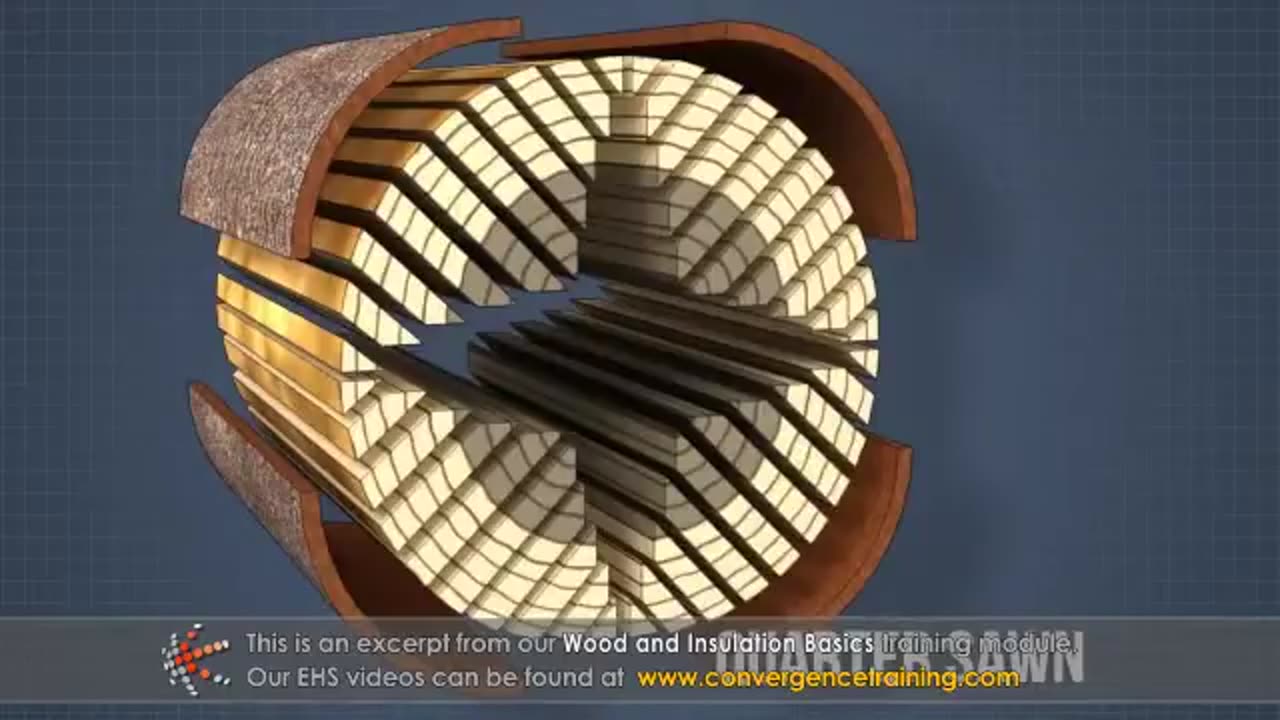Premium Only Content

Wood and Insulation Basics
### **Wood and Insulation Basics**
Wood and insulation are essential materials in construction, each serving unique purposes in building structures. Understanding their properties, types, and applications helps ensure a durable, energy-efficient, and comfortable building.
---
### **Wood Basics**
#### **Properties of Wood**
1. **Natural Material**:
- Sourced from trees, wood is sustainable and renewable.
2. **Strength and Durability**:
- High strength-to-weight ratio; durability depends on species and treatment.
3. **Thermal Insulation**:
- Offers moderate insulation due to its natural cellular structure.
4. **Workability**:
- Easy to cut, shape, and join.
5. **Aesthetic Appeal**:
- Offers warmth and a natural look, enhancing architectural design.
#### **Types of Wood**
1. **Hardwoods**:
- Sourced from deciduous trees (e.g., oak, maple, cherry).
- Dense, durable, and suitable for flooring, furniture, and high-traffic areas.
2. **Softwoods**:
- From coniferous trees (e.g., pine, spruce, cedar).
- Lightweight, easier to work with, and widely used in framing and paneling.
#### **Wood Treatments**
1. **Pressure-Treated Wood**:
- Infused with chemicals to resist decay, insects, and moisture.
- Ideal for outdoor use (e.g., decks, fences).
2. **Kiln-Dried Wood**:
- Dried in a kiln to reduce moisture, preventing warping or shrinking.
3. **Laminated/Engineered Wood**:
- Made by bonding layers of wood or wood fibers (e.g., plywood, MDF).
- Stable and versatile for structural and decorative uses.
#### **Applications of Wood**
1. **Structural**:
- Beams, joists, and studs in building frames.
2. **Finish**:
- Doors, windows, trim, and cabinetry.
3. **Outdoor**:
- Decking, pergolas, and landscaping features.
---
### **Insulation Basics**
#### **Purpose of Insulation**
1. **Thermal Resistance**:
- Reduces heat transfer, maintaining comfortable indoor temperatures.
2. **Energy Efficiency**:
- Decreases energy costs by reducing heating and cooling needs.
3. **Soundproofing**:
- Dampens sound between walls, floors, and ceilings.
#### **Types of Insulation Materials**
1. **Fiberglass**:
- Made of fine glass fibers; available in batts, rolls, and loose-fill.
- Affordable, fire-resistant, and widely used.
2. **Mineral Wool**:
- Derived from natural or recycled stone/slag.
- Offers excellent fire resistance and soundproofing.
3. **Foam Board (Rigid Foam)**:
- Made from polystyrene or polyurethane.
- High R-value per inch, ideal for walls, roofs, and foundations.
4. **Spray Foam**:
- Expands upon application to seal gaps and cracks.
- Provides excellent air sealing and insulation.
5. **Cellulose**:
- Made from recycled paper products treated for fire resistance.
- Used in walls and attics as loose-fill insulation.
6. **Natural Insulation**:
- Materials like wool, cork, or hemp; eco-friendly options.
#### **Insulation Ratings**
- **R-Value**: Measures thermal resistance; higher values mean better insulation.
- Example: R-38 is typically recommended for attics in colder climates.
#### **Placement of Insulation**
1. **Walls**:
- Between studs to prevent heat loss/gain.
2. **Attics**:
- Helps reduce heat escape in winter and heat intrusion in summer.
3. **Floors**:
- Minimizes heat loss to unheated spaces like basements or crawl spaces.
---
### **Wood and Insulation Together**
Wood framing and insulation often work together to create an energy-efficient and structurally sound building. Key considerations include:
1. **Moisture Control**:
- Ensure insulation is compatible with wood to prevent moisture accumulation and rot.
2. **Thermal Bridging**:
- Minimize heat transfer through wood studs by adding rigid foam insulation.
3. **Fire Safety**:
- Use fire-retardant treatments or materials in areas where insulation and wood are close.
---
### **Tips for Choosing and Using Wood and Insulation**
1. **For Wood**:
- Select the right species and treatment for the application.
- Protect against moisture with proper sealing or treatments.
2. **For Insulation**:
- Choose the insulation type based on climate, budget, and installation location.
- Seal gaps and cracks to prevent air leaks.
3. **Combination**:
- Ensure proper ventilation to avoid trapping moisture within wood-framed structures.
---
Let me know if you'd like more details about a specific type of wood or insulation material! 😊
-
 58:14
58:14
theDaily302
18 hours agoThe Daily 302- Tim Ballard
57.1K9 -
 13:22
13:22
Stephen Gardner
12 hours ago🔥You'll NEVER Believe what Trump wants NOW!!
106K289 -
 54:56
54:56
Digital Social Hour
1 day ago $10.83 earnedDOGE, Deep State, Drones & Charlie Kirk | Donald Trump Jr.
59.2K5 -
 DVR
DVR
The Trish Regan Show
13 hours agoTrump‘s FCC Targets Disney CEO Bob Iger Over ABC News Alleged Misconduct
64.2K39 -
 1:48:19
1:48:19
The Quartering
14 hours agoElon Calls White People Dumb, Vivek Calls American's Lazy & Why Modern Christmas Movies Suck!
145K112 -
 2:08:42
2:08:42
The Dilley Show
15 hours ago $37.01 earnedH1B Visa Debate, Culture and More! w/Author Brenden Dilley 12/26/2024
125K42 -
 4:55:59
4:55:59
LumpyPotatoX2
17 hours agoThirsty Thursday on BOX Day - #RumbleGaming
114K8 -
 1:04:52
1:04:52
Geeks + Gamers
16 hours agoDisney RATIO'D on Christmas Day | Mufasa Embarrassed By Sonic 3
83.9K11 -
 8:27:46
8:27:46
Sm0k3m
20 hours agoRumblers Assemble
53.2K3 -
 10:37
10:37
Russell Brand
2 days agoHow is this even allowed?
209K974